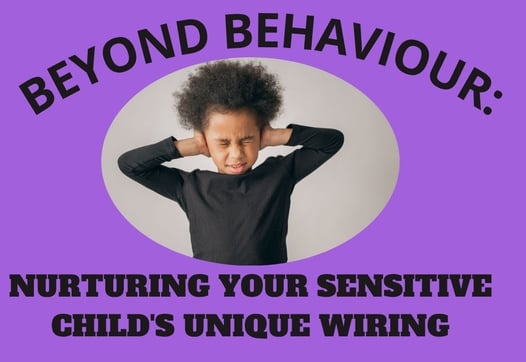Beyond Behaviour: Nurturing Your Sensitive Child's Unique Wiring


As mothers, we pour our hearts into understanding our children. But what happens when traditional parenting advice doesn't seem to click? When your child is susceptible to sounds, textures, transitions, or emotions – whether they're neurotypical with a sensitive disposition or neurodiverse with conditions like ADHD, autism, or sensory processing differences – the journey can feel incredibly isolating. You might be constantly managing meltdowns, navigating intense emotions, or feeling like you're walking on eggshells.
The truth is, your child's challenging behaviours are often not intentional defiance. As Dr Mona Delahooke eloquently explains in "Brain-Body Parenting," these behaviours are frequently signals from their nervous system. They're telling you, in the only way they know how, "My body is overwhelmed," or "I don't feel safe right now." This is especially true for highly sensitive and neurodiverse children whose nervous systems process the world differently.
Decoding the Cues: It's Not Just "Bad Behaviour"
Imagine your child's nervous system as a finely tuned instrument, sometimes playing a complex, unique melody. For some, this instrument is extra sensitive to every vibration in the room. When overwhelmed, their body might involuntarily shift into:
Fight or Flight: This may manifest as explosive tantrums, defiance, yelling, or resistance. Their system is screaming, "I need to get away from this overwhelming feeling!"
Freeze or Shutdown: This can manifest as withdrawal, zoning out, selective mutism, extreme fatigue, or an inability to respond to external stimuli. Their system is saying, "I can't cope, so I'm shutting down."
For our highly sensitive and neurodiverse children, these shifts can happen more quickly, with less apparent triggers, and take longer to recover from. Understanding this isn't about excusing behaviour; it's about shifting your lens from "What's wrong with my child?" to "What is my child's body telling me they need?"
Co-Regulation: Your Superpower as a Mother
This is where co-regulation comes in – your incredible superpower. Co-regulation means lending your Calm and regulated nervous system to help your child find theirs. It's not about logic or lengthy explanations in the heat of the moment. It's about:
Regulating Yourself First: Take a deep breath. Acknowledge your frustration. You can't pour from an empty or dysregulated cup. Your calm presence is one of the most powerful tools you have.
Creating a Sense of Safety: For a sensitive child, safety isn't just about physical protection; it's about predictability, gentle tones, and an understanding that their big feelings are accepted, not judged. This might mean lowering your voice, offering a comforting touch (if welcomed), or simply sitting with them in silence.
Looking for the "Why" Beneath the "What": Instead of saying, "Stop screaming!" try asking yourself, "What sensory input is overwhelming them? Are they tired? Hungry? Is this a reaction to a transition?" For neurodiverse children, this might involve considering sensory sensitivities, executive function challenges, or communication differences.
Practical Steps for Nurturing Their Unique Wiring
Observe and Document: Keep a simple journal. When does the challenging behaviour occur? What happened immediately before? What helps your child calm down? Look for patterns related to sleep, food, noise, light, social demands, or transitions. This is invaluable for both neurotypical individuals and those with neurodiversity.
Prioritise Sensory Regulation: Identify Your Child's Sensory Needs. Do they require quiet spaces, deep pressure (such as hugs or weighted blankets), movement, or calming visual input? Proactive sensory breaks can prevent meltdowns.
Simplify and Slow Down: Over-scheduling and rapid transitions are enormous stressors. Allow for downtime and extra time between activities.
Validate Their Experience: Even if you don't understand why they're upset, acknowledge that they're indeed upset. "I see you're feeling overwhelmed right now." This builds trust and connection.
Seek Understanding, Not Just Compliance: Shift from "I need them to obey" to "I need to understand what their body needs to feel safe and regulated."
Raising a sensitive or neurodiverse child is a profound journey of learning and adaptation. By understanding that behaviour is often a form of communication from their unique nervous system, you empower yourself to respond with compassion, build deeper connections, and help your child thrive in their unique way. Your love and understanding are their greatest strengths.
References:
Delahooke, M. (2022). Brain-Body Parenting: How to Stop Managing Behavior and Start Connecting with Your Child Through Co-Regulation. Harper Wave.
